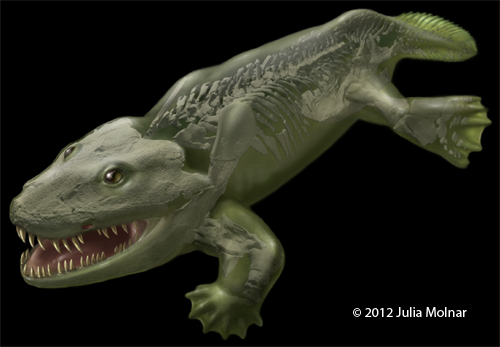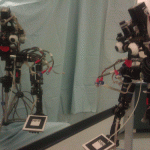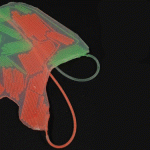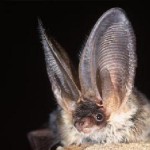
Flesh reconstruction of the whole body of Ichthyostega. Image: Julia Molner
A highly advanced computer model shows how an early tetrapod heaved itself out of primordial water.
Ichthyostega was an ancient tetrapod that lived around 360 million years ago. It is considered the earliest known creature to leave the water and walk on land, but a UK study recently published in Nature has revealed that it could barely walk at all.
The 3D computer model showed that, contrary to the popular view, Ichthyostega could not have walked easily on all four legs like a salamander, which is how it’s been depicted for decades. Instead, it probably moved more like a mudskipper fish — hauling its body forward with its two front limbs and using its back legs only for balance.
“This research is very exciting because we are essentially bringing a 360 million-year-old creature back to life for the first time,” said the University of Cambridge researcher Stephanie Pierce who was the lead author of the study conducted at The Royal Veterinary College. “We have essentially paved the way for future research into how bony animals first got onto land, a very important evolutionary event.”
The research team based the model on fossils found by palaeontologists during field expeditions to Greenland in the 1920s”“40s. They reconstructed a 3D skeleton using a technique called micro-computer tomography scanning (µCT), which is basically a 3D x-ray, similar to medical CT scans used in hospitals, but with much higher resolution.
“This process allowed us to see inside the rock and virtually remove the fossils that were embedded within it,” said Pierce. “We used 3D computer animation software to stitch each bone in Ichthyostega‘s skeleton back together — like a jigsaw puzzle. We [then] manipulated all of its limb joints — shoulder, elbow, hip and knee — to see how mobile the limbs were and what poses they could (or could not) perform.”
The researchers then did the same test using five modern land animals — a salamander, crocodile, platypus, seal and an otter — to determine the reliability of the model in predicting limb mobility and rotation. They found that the model over-estimated the ranges of limb movement of the animals, which ended up being a bias that actually strengthened their conclusions.
The model showed that Ichthyostega would not have had much mobility around its shoulder and hip joints. This indicates that the ancient animal could not have moved around easily on land, and probably spent most of its life in water. “We found that the hip anatomy in Ichthyostega would have prevented the hind feet from making firm contact with the ground — meaning it could not have supported its body weight on all four legs,” explained Pierce. “[Therefore] Ichthyostega probably used its paddle-like legs and tail to swim in the water.”
The fact that Ichthyostega had limbs of a tetrapod, but was probably quite incompetent in using them, is an interesting observation on evolution at work. “All this points to the idea that limbs may have evolved before the ability to actually walk. It also shows that just because you have limbs, it doesn’t mean you can walk,” said Pierce.
Pierce explained how previous work suggests the spine of Ichthyostega moved up-and-down like a mammal rather than side-to-side like a fish or salamander. The team plans on testing this idea and developing a picture of how the whole body of the ancient animal would have moved.
Source: Natural Environment Research Council (NERC)







Zivile
June 7, 2012
Hey! Here I found more amazing animals 3D models http://www.cgtrader.com/3D-models/Animals.html